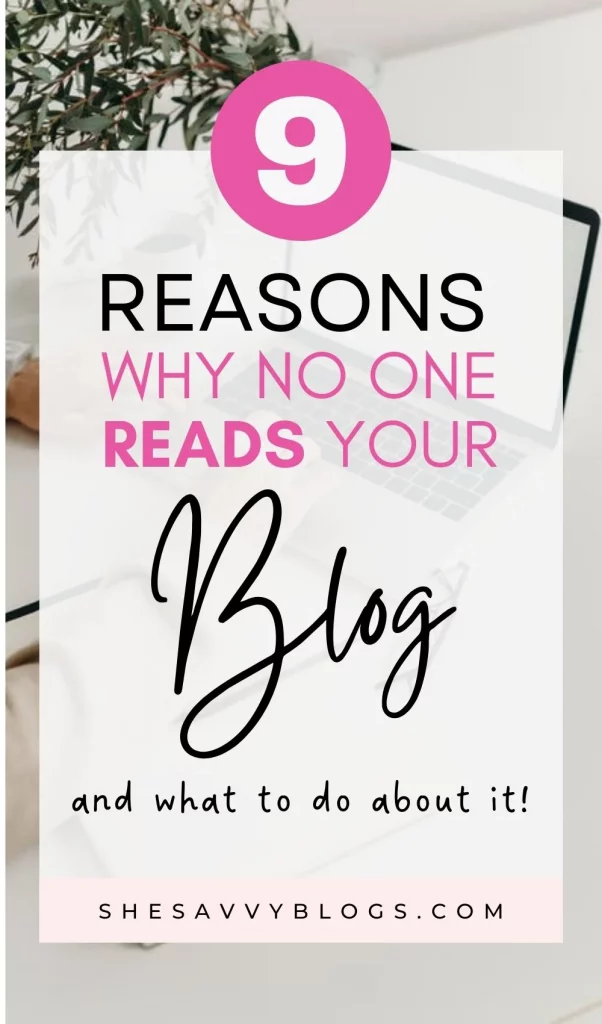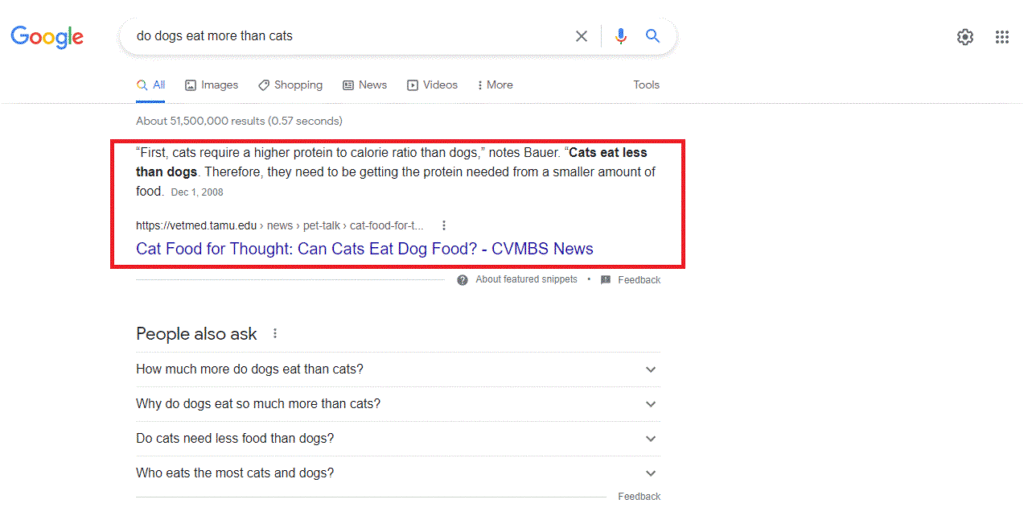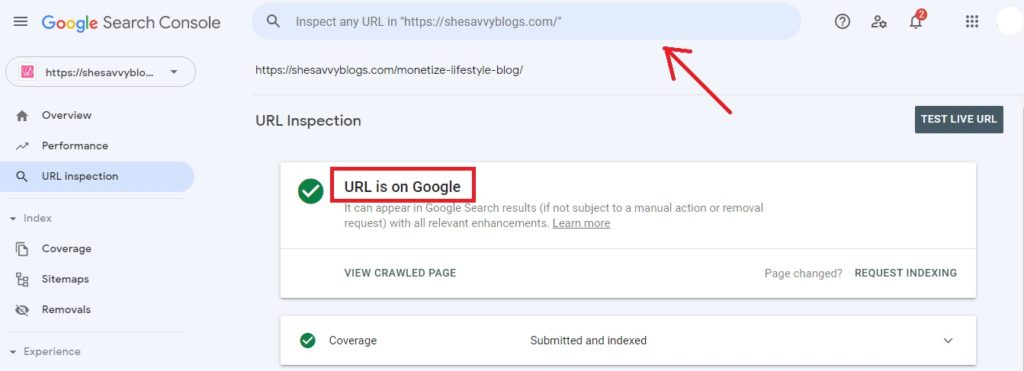*This post may contain affiliate links. That means I may earn a small commission from qualifying purchases or sign-ups at certainly no additional cost to you! Thanks!*
You have probably published 10 blog posts, crunched the creative juices, and made time despite a full-time job. And yet, each day becomes more frustrating because your blog isn’t getting any traction at all.
You’re not alone. I was in the same rut for years.
While in college, it took me 3 failed websites (all from free blogging platforms) to realize why no one reads my blogs and why my hard work never paid off!
I was that stubborn kid who starts everything all over again every time I see trickles of failure.
Sooner or later, I’ll leave the blog and completely forget it. That was me, a few years back.
Unfortunately, that attitude is one rampant reason why I (and many bloggers) failed — it’s that some bloggers didn’t take blogging seriously.

But what if you’re serious about blogging and still don’t get enough traffic?
Why is no one reading your blog despite the efforts you put in?
After all the years of trials and errors, hopelessness, and revived motivation, here are the factors I learned that we need to consider to make sure our blog is leading to success.
9 Reasons Why No One is Reading Your Blog
1. Your blog post is too “fluffy”.
Yes, I know blog posts must be engaging. Indeed, a play with words, metaphors or a wide vocabulary sets a specific tone.
But in content writing, you see, too much fluff can turn off your readers.
Fluff writing means adding unnecessary words or details that don’t add value to your key points.
Sometimes, bloggers express too many opinions (like speaking their thoughts out loud) and lose track of the real topic.
When I was new to content writing, I admit I overdid it.
Whenever I enjoy a topic, it becomes too lengthy, too opinionated, and overly enthusiastic that it gives most readers a headache.
Fluff writing puts our readers in a spiral without them gaining much information.
Cut off the fluff. Check your paragraphs.
Are there consecutive sentences that mean the same thing? Or can these sentences be squashed into one compact and concise thought?
Use stronger verbs and find the easiest way to say your thought.
Save everyone’s time by serving them the answer right off the bat!
2. You don’t write info-packed content.
Aim to write “bookmarkable” blog posts.
A bookmarkable content is so “meaty” that your readers just couldn’t stop reading from one sentence to another.
Captivate them with your introduction. Present original, unique, and effective strategies. Adding a personal experience makes it stand out.
Also, did you know that concise and succinctly answered queries win the Google snippets?
Snippets are those quick answers google provides at the top of the search results.
Here’s one example of a snippet:

When you write an info-packed paragraph that answers a specific query, Google allows you to jump over all the competing blog posts for that keyword and set you at the top of Google search.
Saving your reader’s time and winning the snippets? Admirable!
Moreover, write detailed and long-form content.
When crafting a blog post, think like a beginner and perceive the searcher’s next questions.
Put yourself in your reader’s shoes. Imagine what a beginner would ask next.
If it fits the topic, squeeze that query into your post. It will surely help your reader!
But if you think that a query will shine in a whole another blog post, then publish a whole new piece about it and do interlinking.
Interlinking means an article is linking to other related articles on your website. Once clicked, readers will be redirected to other articles on your site which boosts searcher engagement.
3. You don’t use subheadings.
Never leave out good formatting.
Many bloggers think pageviews are the most crucial metric. But no. The truth is, it is a battle of attention!
It would be marvelous if everyone who visits your blog, reads everything, right?
Unfortunately, not everyone got enough time for that.
In fact, a staggering 55% of people who click on websites spend only 15 seconds (or fewer) on a page.
As a reader myself, long blocks of paragraphs overwhelm me especially when I can’t find the information I need.
It makes me think, “if I want to extract good pieces of information from this post, do I really have to read these whole blocks from start to finish?” But it’s like 5,000-words long.
Oh my. Hard pass.
That said, make sure your blog posts are scannable — palatable — to your readers.
Use subheadings!
Subheadings are subsection headings to show your readers an overview of the section topic.
- H1 tags are for Title/Headlines
- H2 tags are for Subheadings
- H3 tags are for sub-Subheadings
While subheadings improve scannability for the readers, it also helps Google make more sense of the topic and subtopics you included.
4. Your blog post is poorly written.
Blog posts must be comprehensible to 5th Graders — that’s the rule of thumb.
Don’t sweat sifting through the dictionary for complex vocabulary. Rather, simple and everyday words would look more relieving to your readers.
Write like you’re conversing with a friend.
Aside from writing correct grammar, the sentences must be coherent. Let your sentences flow one step at a time like you’re guiding a kid on a tour.
This isn’t a strict literary school. There are some grammar rules you can override when it comes to blogging.
But here are some tips to improve your writing:
Read your content out loud.
Sentences are like poems, too. It sways, flows, and must be good to the ear.
When you read a sentence and it sounds choppy or hanging, you better change the sentence construction or use WordHippo or any reliable dictionaries to find better synonyms.
Use idioms.
Metaphors and idioms make your blog dance, so play around with words!
Here’s the thing.
When I started freelancing, the most common advice I got as a writer is to “write short sentences” and “don’t use passive voice”.
I followed the advice. Strictly.
But now? Nah.
In blogging, you have to change the pace from time to time.
Some paragraphs sound dull when written in pure active voice, but charming and emotion-drawing when in passive.
So bend some rules.
Use Grammarly.
So far, Grammarly is the most accessible (and reliable) free grammar tool. I even have it installed on my browser.
Make an account, copy your piece there, and bam, it detects the errors automatically and provides better suggestions!
5. Your keywords are all over the place.
Use keywords to improve your searchability.
But wait up, not any keyword.
Back then, I tell myself, “Oh, this is a related keyword!” and squash them all into my blog post even when I’m not specifically writing about them — which is wrong basically.
Only insert targeted keywords and queries that you know your blog posts answer.
For example, if you’re writing about “Cat rabies vaccine”
Your keywords must point out similar keywords that lead to that one main topic. For example, include long-tail keywords such as:
- can a vaccinated cat get rabies
- can I give my cat rabies vaccine
Stay within the bubble of cat rabies vaccines.
In this example, we don’t want to involve “rabies first aid” topics to avoid a scattered SEO strategy. But that could make a great separate post!
I use free keyword tools like answerthepublic.com and keyword.io.
Also, to have a better grasp of what people desire to learn about, use Google’s “People also ask” section.

And of course, as Google evolves, keyword stuffing doesn’t really work now. Rather, aim for information-rich content that will engage your readers.
Help the reader, and Google rewards you for that!
You may also like: 5 Ways to Monetize a Blog Without Google AdSense
6. Your blog hasn’t been indexed yet.
Maybe, the reason why no one reads your blog is that Google hasn’t indexed it yet.
Google indexing means that before your blog post shows on Google search, the Google bots would crawl on your website and analyze your content.
If you’re not promoting the blog and solely rely on organic traffic from Google, then it can take a while.
From my experience, high competition topics rank slowly, while low-competition keywords get indexed in a matter of 2 weeks (or less), even with a new website.
To see if your blog post has already been indexed, check your Google Search Console. Enter your blog post’s URL.

If it’s already indexed, it will show a green checkmark saying your blog post is on Google. Easy right?
7. Your headlines aren’t click-worthy.
Imagine yourself reading your title on a Google search.
Among all the competing sites on Google results, would your headline be enticing enough to get clicks?
A good recipe for headlines includes adjectives that trigger emotions.
Here is a free Headline Analyzer by MonsterInsights to give you a good headline analysis.
8. Slow site speed
Maybe, no one reads your blog because it takes 8 seconds for it to load! Yep, that’s slow as a turtle.
Sadly, no one has got much time for that. Readers will be drawn to bounce out from your website.
Unless you’re the only resource for their query, they won’t wait long for a slow-loading website.
According to John Mueller, a Webmaster Trends Analyst at Google, the ideal loading speed of a website is less than 2-3 seconds.
If you’re having trouble reducing your loading time, here are several possible reasons why your website loads slow and what to do about it:
- Massive image sizes – don’t use large-sized images. As for me, my images often range from 15kb-200kb. The lowest image format you can use is webp and jpg.
- Slow Theme – choose fast and mobile responsive themes. I use GeneratePress and Kadence themes. They’re fast and light.
- Too many plugins – plugins can slow your website so remove the unnecessary ones.
- Webhosting – I recommend Bluehost as currently the fastest web hosting in the industry.
- Google Fonts – Your content font is also a contributor to your slow website. You can add the “disable google font” plugin.
Analyze your site speed here. Use an incognito browser to avoid other data from affecting your site speed reading.
9. You’re writing too much about yourself – stop writing a diary!
Don’t invite them into your home, and leave them strolling around unguided. You gotta engage them because that’s what they came here for.
There’s a difference between a personal blog and a lifestyle blog.
In blogging, you have to take your readers with you, understand the reasons why they landed on your page, and then lead them to a solution.
Do these, rather than spotlighting yourself.
Find a sweet spot where your readers understand where you’re coming from and they can draw the picture of which solution you’re providing them!
WRAP UP
Do you still ask the question, “what if no one reads my blogs?”
I must tell you, if you’re providing value, there’s no way you won’t get readers.
Writing quality content is the best solution to gaining readers.
But while numerous benefits and rewards come from quality content, a great SEO strategy, enhanced site speed, and better writing techniques will help you, too, in the long run.
I hope the list gave you insights on what to adjust.
Good luck on your blogging journey!
BLOGGING RESOURCES I RECOMMEND:
Grammarly – Detects misspelled words and grammatical errors. It gives your piece an overall performance score based on correctness, clarity, engagement, and the delivery of your blog. All free!
Ezoic – Aside from ad monetization, Ezoic also offers SEO, Analytics, and Site Speed tools. With Ezoic, my ad revenue increased 23x more than Google Adsense. Thankfully, they now offer an Access Now Program that accepts new blog websites with a minimum of zero – again – zero traffic!

